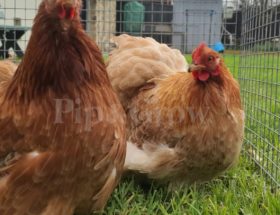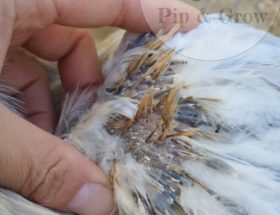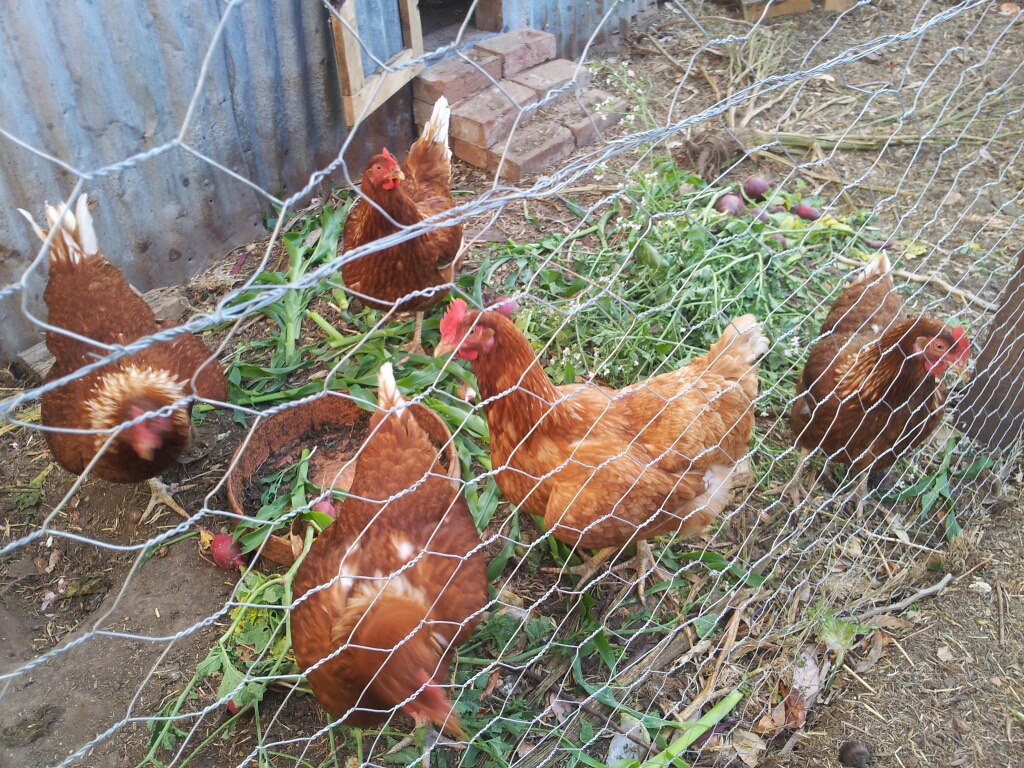Definition :
In poultry breeding, a genetic throwback refers to the appearance of traits from previous generations that had seemingly been bred out of the current line. This phenomenon occurs when recessive genes, which were not expressed in the immediate parents but were present in earlier ancestors, are unexpectedly expressed in offspring. Genetic throwbacks can result in traits such as color patterns, feather types, or other characteristics that were prevalent in earlier generations. These throwbacks can occur even after several generations of selective breeding aimed at eliminating or minimizing certain traits.
Why does it happen? :
Poultry standards and shows focus on the appearance of birds within standard descriptions, not the purity of bloodlines or genetics. Therefore, breeders may incorporate birds from other breeds to achieve desired traits, leading to genetic variability in offspring.
Differences between Genetic throwback Vs Cross bred :
A “crossbreed” refers to the offspring resulting from the breeding of two different breeds without a specific purpose. These birds often exhibit a combination of traits from both breeds, typically without a discernible pattern.
A bird displaying a genetic throwback is still considered “purebred” and perfectly healthy. However, it cannot be exhibited and should be excluded from a breeding program unless the breeder has a specific purpose in mind. Nonetheless, these birds can excel as excellent backyard layers.
Exhibit 1.
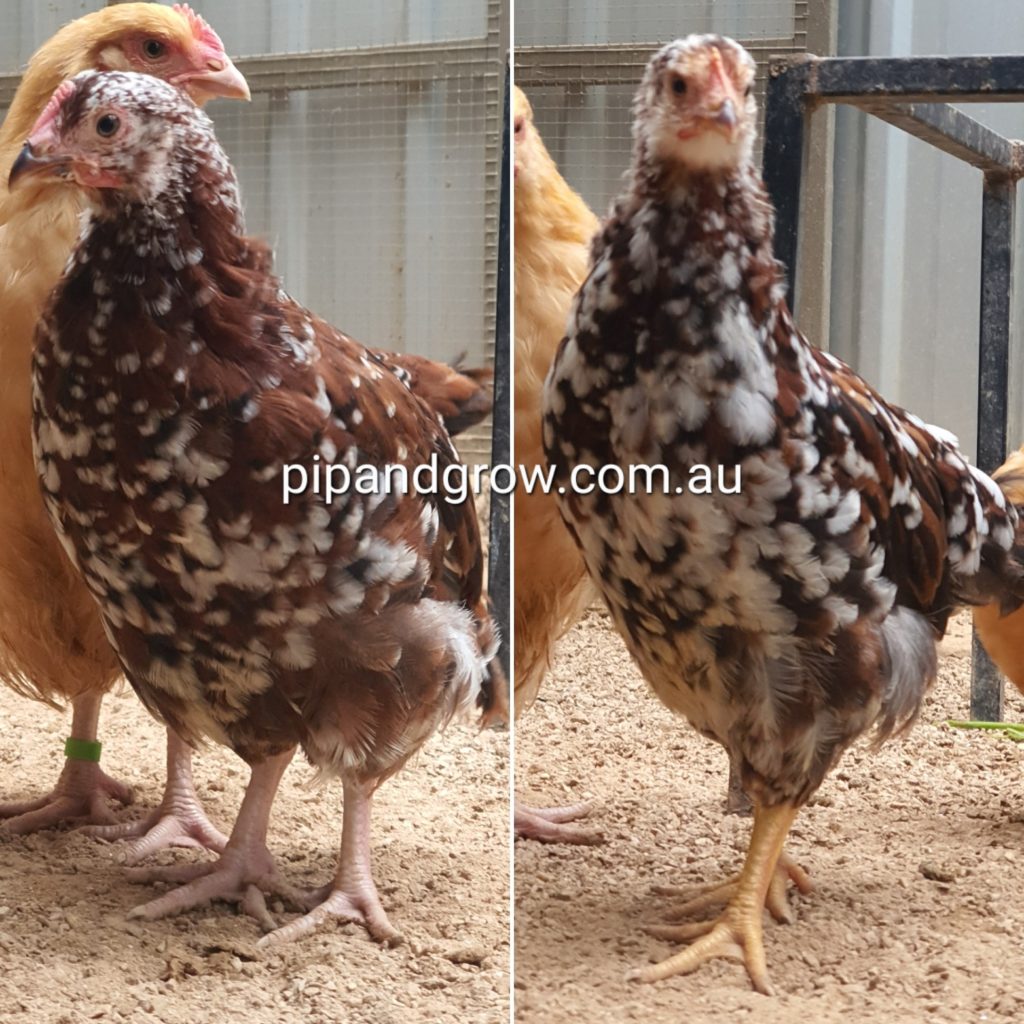
Here are two Speckled Sussex pullet siblings hatched from the same exhibitor’s line of fertile eggs. (Yes, we frequently purchase eggs from other breeders for our breeding program.) Apart from slight differences in markings, can you identify any other distinctions between the two birds?
The answer is “Leg colour”
This particular pullet with yellow legs exemplifies a “genetic throwback.” While all her other traits align with our expectations for the Speckled Sussex breed, she possesses yellow legs instead of the correct white ones. As a result, she won’t stay in our breeding program and will instead be offered as a pet quality bird. Some genetic traits are visible, while others remain hidden. In this case, it’s likely that both her parents had the correct white legs, but one or more hens and a rooster carried recessive white leg genes. Identifying the specific birds carrying these recessive genes can be challenging for breeders, as it only manifests when two recessive copies meet, which doesn’t occur consistently.
The most straightforward solution for the breeder in this case would be to find a new breeding rooster that does not carry the recessive gene for yellow legs.
Exhibit 2
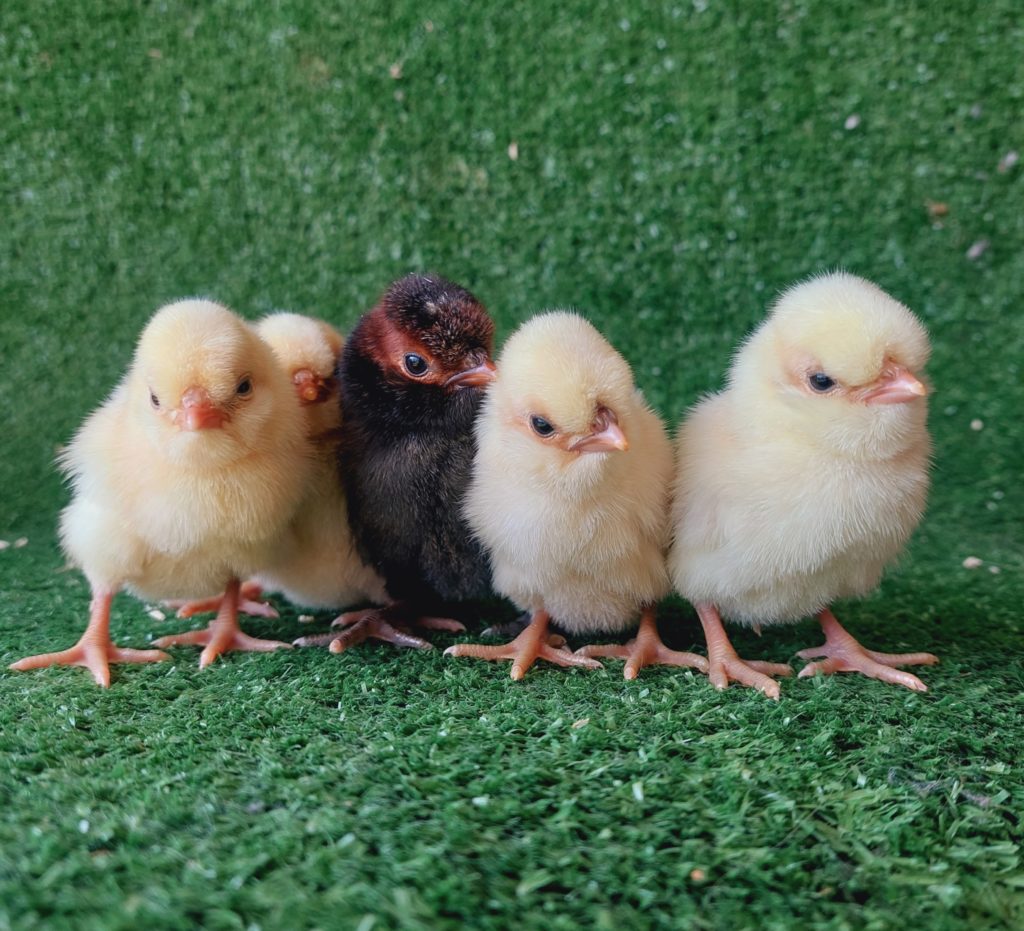
Gold laced Polish chicks are occasionally hatched from buff laced Polish breeders’ fertile eggs. The origin of this gold laced color gene arises from the need to occasionally “re-set” Buff Laced color genetics by incorporating the Gold Laced gene. This breeding practice aims to improve the depth of buff color and the quality of lacing.
Exhibit 3.
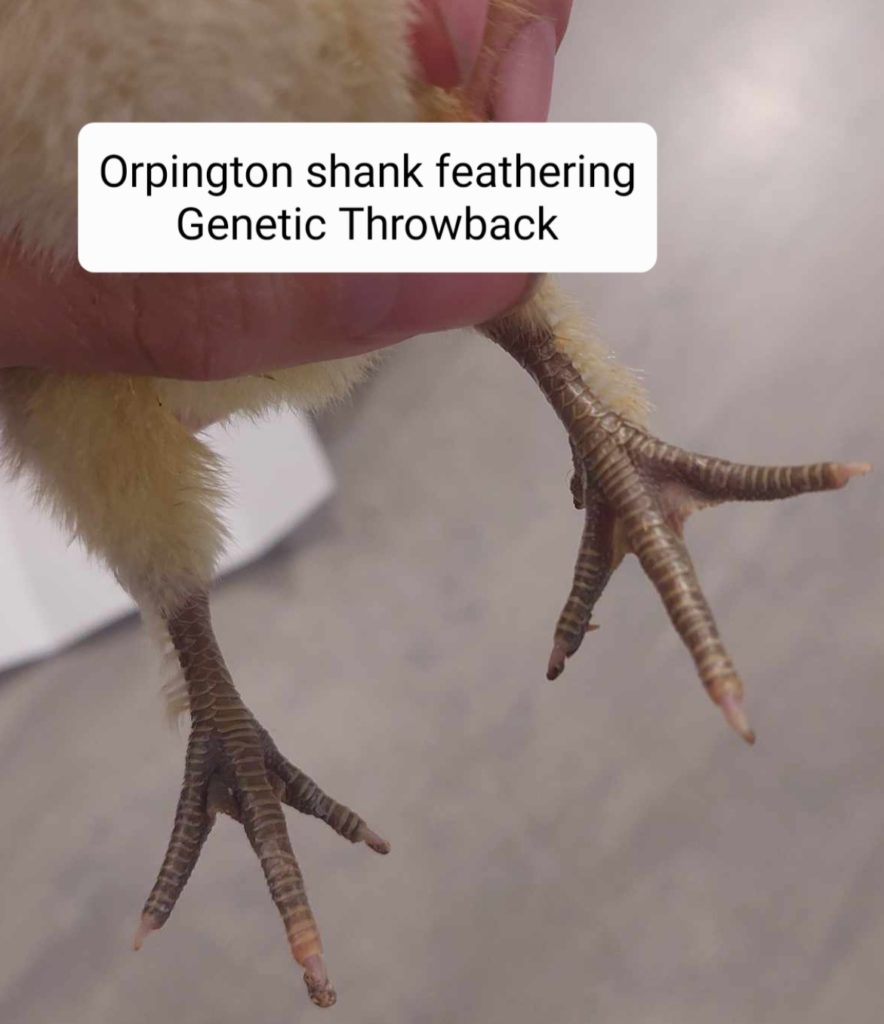
Occasionally, a small number of our Blue, black and splash bantam Orpington offspring may hatch with stubble or peach fuzz on their shanks, likely stemming from their Cochin ancestry several generations back during the creation of the breed. While all of our breeders are clean-legged with no birds exhibiting stubble or feathers on their legs, it’s worth noting that feathered leg gene dominance and multiple genes can contribute to shank and leg feathering, even if not visibly expressed.
While this trait is not within the Australian Poultry Standard, it’s not uncommon in Australian Orpington breeding, particularly in Black-based lines. Although the stubble often falls off as birds mature or is covered by their low skirting, making them suitable as pet-quality birds. However, it should be excluded from breeding programs or exhibition purposes.
We have not observed this particular throwback in our Chocolate bantam orpington or Buff standard Orpington.
*Reference : Written by Ross Gibson – President Orpington Club of Australia, Section “Time warp to 2018” No 2.
Orpington club of Australia http://theorpingtonclubofaustralia.net.au/
Discussion regarding feathered legged genetic on Backyardchickens.com USA
These hidden genes differ and cannot be visually identified by the breeder unless they have been consistently bred over time and their offspring monitored. Breeders can only make assumptions based on visible traits at the time. This is why many exhibitors are cautious about introducing new birds unless there is a clear purpose and thorough knowledge of the line. A single recessive gene can undermine years of hard work and future exhibition plans.
For us, our aim is to breed within the Australian Poultry Standard. However, we do not focus on breeding birds for fancy bloodline titles or exhibitions that require intensive selective in/line breeding to achieve specific goals. Our primary goal is to breed healthy, content birds with some genetic diversity. Unexpected traits may emerge, but they do not always have negative consequences. For example, a new line may exhibit better type, markings, or stronger/different disease-resistant genetics. While it may require additional effort, we strive to see the positives in every situation.
As the saying goes, “There is no gain without taking a risk.” If our approach to poultry breeding does not align with yours, we respect your methods as well. We understand that everyone has different ideas, and there is no one-size-fits-all approach in breeding.
